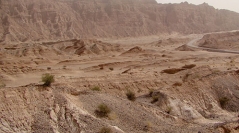

 Comptes Rendus Palevol
22 (1) - Pages 1-16
Comptes Rendus Palevol
22 (1) - Pages 1-16Fossil remains herein described are referred to different species of Dasypodidae Gray, 1821 (Mammalia, Xenarthra, Cingulata) and come from the upper levels of the lower member (Late Miocene-Early Pliocene) of the Toro Negro Formation at Quebrada de Las Torrecillas, La Rioja Province, Argentina, where previous vertebrate records only include those of Pyramiodontherium scillatoyanei De Iuliis, Ré & Vizcaíno, 2004 (Mammalia, Xenarthra) and Opisthodactylus cf. kirchneri Noriega, Jordan, Vezzosi & Areta, 2017 (Aves, Rheidae). The remains of Dasypodidae herein presented include Vetelia ghandii Esteban & Nasif, 1996, Chasicotatus peiranoi Esteban & Nasif, 1996, Macrochorobates scalabrinii (Moreno & Mercerat, 1891), Prozaedyus sp., and Paleuphractus argentinus (Moreno & Mercerat, 1891), and constitute the first records of these species for the Toro Negro Formation, increasing the mammal diversity for this unit. The association of dasypodids here described shows strong affinities with those described for Late Miocene localities of Northwestern Argentina. Under these evidences, the Dasypodidae here reported for Quebrada de Las Torrecillas site show a characteristic association of taxa from Northwestern Argentina, suggesting a Messinian age (Late Miocene) for the bearing levels of the Toro Negro Formation. In this way, these records support the accurate ages recently proposed for the lower Member of the Toro Negro Formation (i.e., Late Miocene-Early Pliocene).
Armadillos, Neogene, Northwestern Argentina, South America